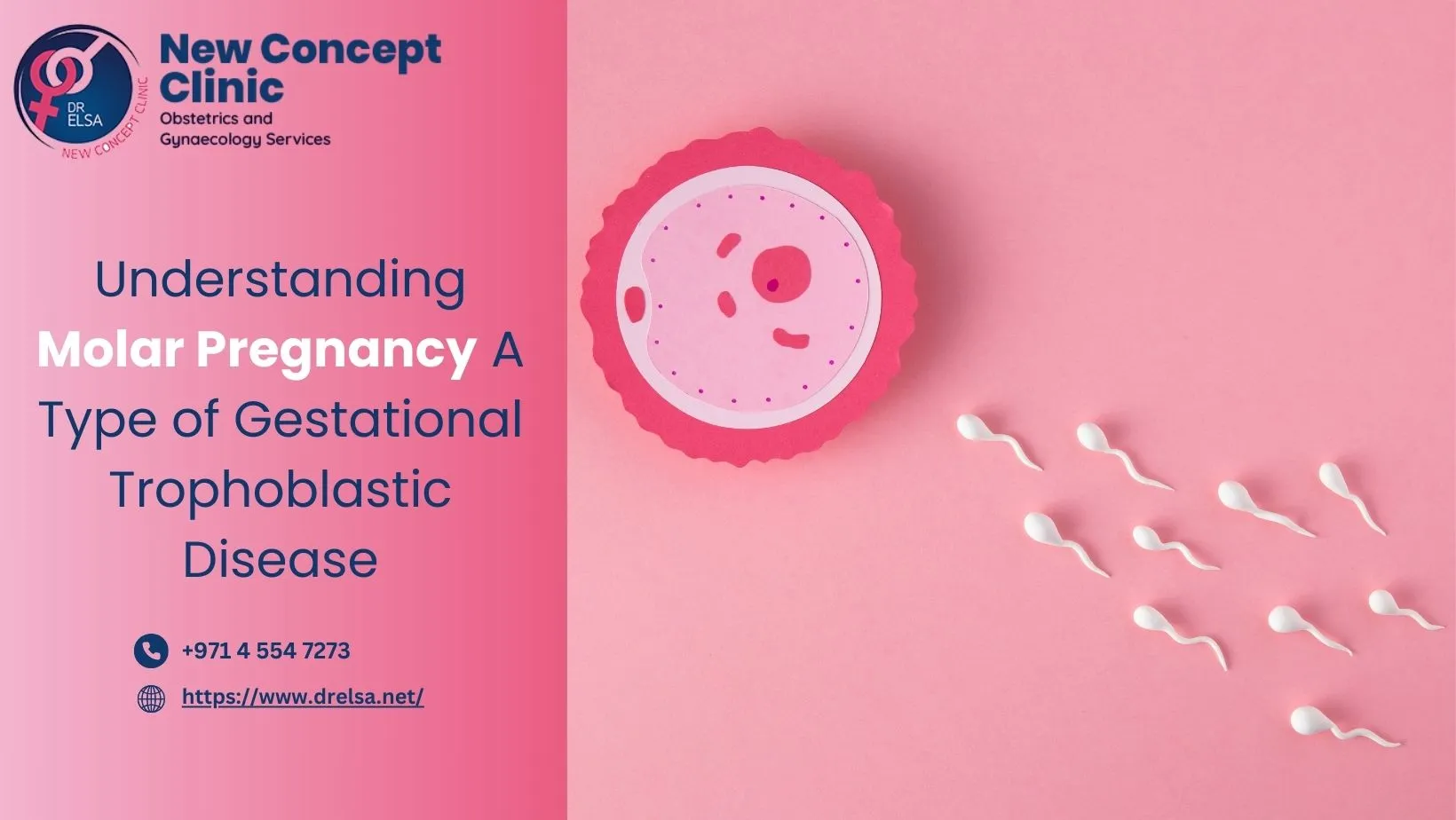

In this the organ named placenta that feeds a developing foetus .Placenta is made of cells called trophoblasts. It grows in the prenatal stage in gestational placenta tissue .
When trophoblasts cells grow abnormally and then become placenta . This leads to swelling in placenta developing cysts which can cause miscarriage of the foetus.
Molar Pregnancy takes place when there is a genetic flaw during the process of fertilisation and this causes the growth of abnormal placenta tissues inside the uterus.
In molar pregnancy, the embryo doesn't grow, but the placenta grows quickly and looks like a bunch of abnormal grape-like cells.
Complete Molar Pregnancy : In this pregnancy there is no foetus and the tissues of placenta tend to swell up and form cysts filled with cysts. This can create complications in pregnancy.
Partial Molar Pregnancy : This pregnancy has high chances of miscarriage as the foetus doesn’t survive.. Eventually the foetus dies due to irregular placenta tissue.
If this sort of pregnancy is not diagnosed early it could lead to severe complications later.
Molar pregnancy is a rare kind of pregnancy with a lot of severe complications.
Initially molar pregnancy will look like a normal pregnancy but gradually it will start showing symptoms like
Excessive nausea & vomiting
Grape sized cyst formed in the placenta could pass from vagina .
Pressure & pain in the pelvic area.
Brown or bright red colour bleeding for the first 3 months.
You should immediately check with your gynaecologist if you have such symptoms.
Early treatment can prevent further complications.
Fast growing belly during initial months of pregnancy
Thyroid hormone imbalance.
Cysts in Ovary
High blood pressure
Too much protein in urine before 4-5 months..
Partial Molar Pregnancy happens when a fertilised egg has the wrong number of chromosomes from the parents.
Two possible causes :
Complete molar pregnancy- When an egg doesn't join correctly with a sperm, only the father's chromosomes copy themselves.This means there's no baby because the mother's chromosomes are missing & only the father's are there.
Partial Molar Pregnancy- It happens when the dad gives two sperms instead of one, making too many chromosomes. This extra genetic material makes the baby not grow properly and causes a miscarriage.
There are two major factors that lead to molar pregnancy.
When you had a molar pregnancy before. This could make molar pregnancy occurs again.
When the age of the mother is more than 40 or she is younger than 15.
Yes it can be prevented ,one must consult a specialist gynaecologist . It's harder to have a successful pregnancy after a molar pregnancy.
Check with your health care professional for ultrasound of molar pregnancy.
Waiting for 6 months or 1 year lowers the risk of another molar pregnancy for you.
Persistent Gestational trophoblastic neoplasia (GTN)After taking out the molar tissue in complete molar pregnancies, sometimes some bits are left and keep growing. This is called persistent Gestational Trophoblastic Neoplasia (GTN). It is rare and comes from molar pregnancies, causing unusual growth of certain cells.
Even after removing molar tissues, if the hCG levels (usually high in pregnancy) stay high, it might mean a problem.
Light or heavy vaginal bleeding often happens with GTN because abnormal tissues from a mole can go deep into the uterine wall.
Even after removing the molar pregnancy, the uterus might keep growing more than it should for that pregnancy stage, showing that some leftover tissue is still active.
Abdominal or pelvic pain or discomfort
Respiratory Distress such as cough, shortness of breath, and chest pain may arise due to pulmonary involvement.
Persistent nausea persists even after molar tissue removal giving false idea of pregnancy.
Chronic vaginal bleeding leading to iron deficiency anaemia due to blood loss over time.
A thorough evaluation by a healthcare professional is crucial when you see symptoms.
Diagnosis often involves serial monitoring of hCG levels to detect any abnormal patterns indicating GTN.
Ultrasounds or CT scans assess the extent of the disease, especially if metastasis is suspected.
Blood tests checking for Preeclampsia, Hyperthyroidism and Anaemia. .
Early pregnancy sonogram to check if it's partial or complete molar pregnancy.
Treating GTN includes different methods to stop abnormal cell growth. Chemotherapy and surgery are main treatments, but there are other options to treat it completelySurgical Intervention like Dilation and curettage might be employed depending on the spread of the disease. Placenta tissue is removed from the uterus with a suction device. Uterus Removal will be considered if there is no desire for future pregnancy.
Follow-Up Care: After the first treatment, it's really important to check often to make sure the GTN is gone and to catch it early if it comes back. This means regular check-ups, scans, and blood tests.
Psychological Support: Patients and families facing GTN might find it hard emotionally. But speaking to counsellors, joining a support group helps with feelings and stress can make it easier to cope with the disease.
Fertility Preservation: Young women who might want kids later should think about saving their ability to have babies. Freezing eggs or embryos could help keep the chance to have kids later on.
Nutritional Support: Good food is really important for people getting GTN treatment. Eating right can help handle side effects & stay strong. Nutrition experts can help with a diet that fits the body's needs during and after treatment.
Targeted Therapies: Scientists are studying new treatments for GTN that use special drugs to stop cancer cells from growing. These treatments try to work better than chemo with fewer side effects.
Clinical Trials: Joining studies for new treatments of GTN might give you access to new and advanced treatments that could make things better for people with this condition.